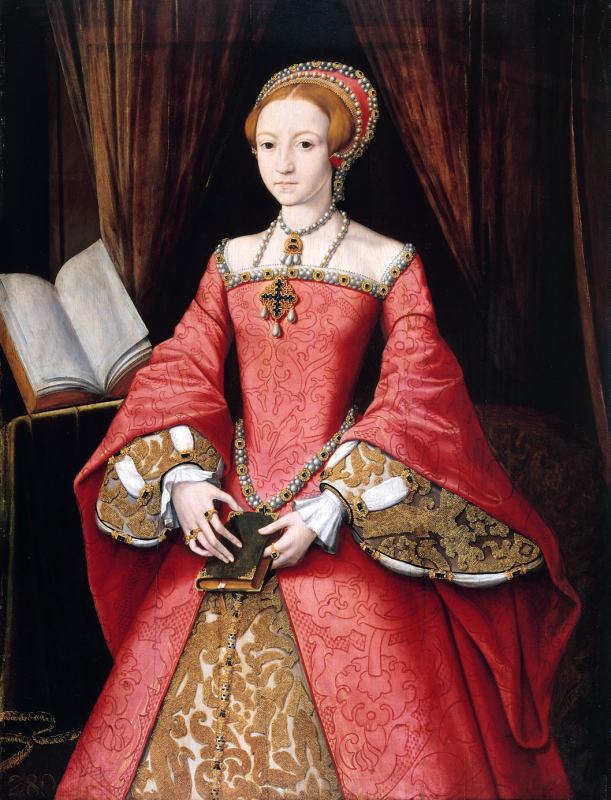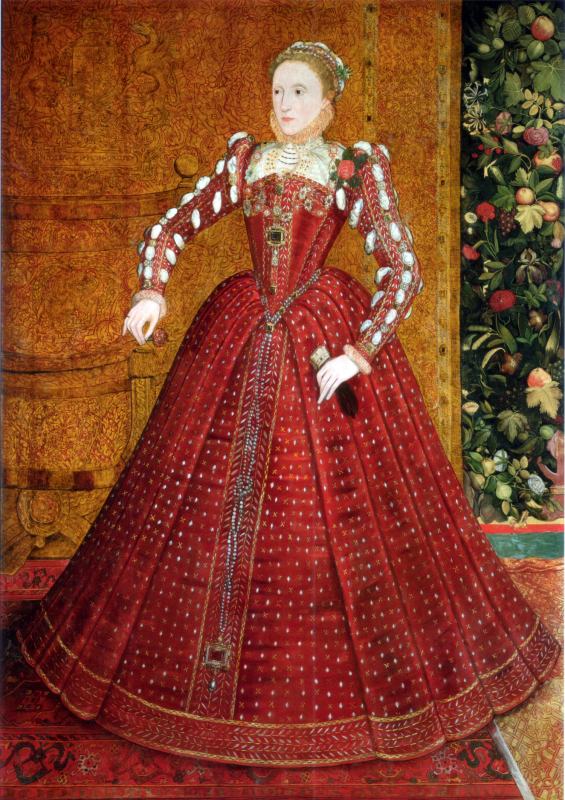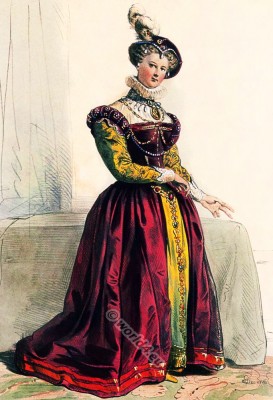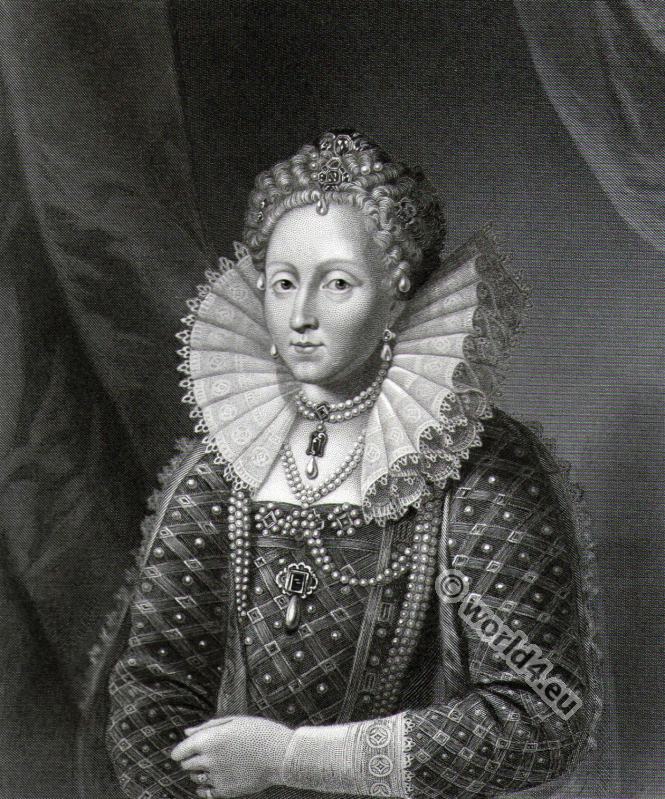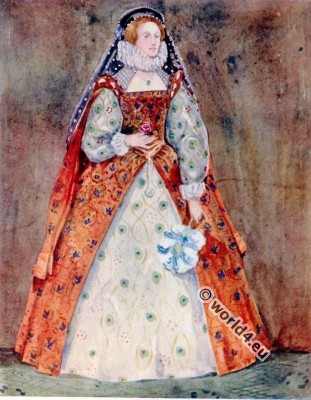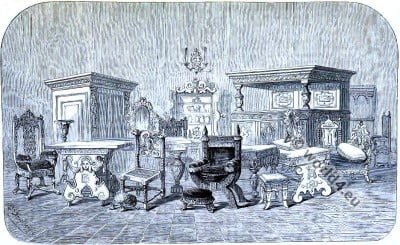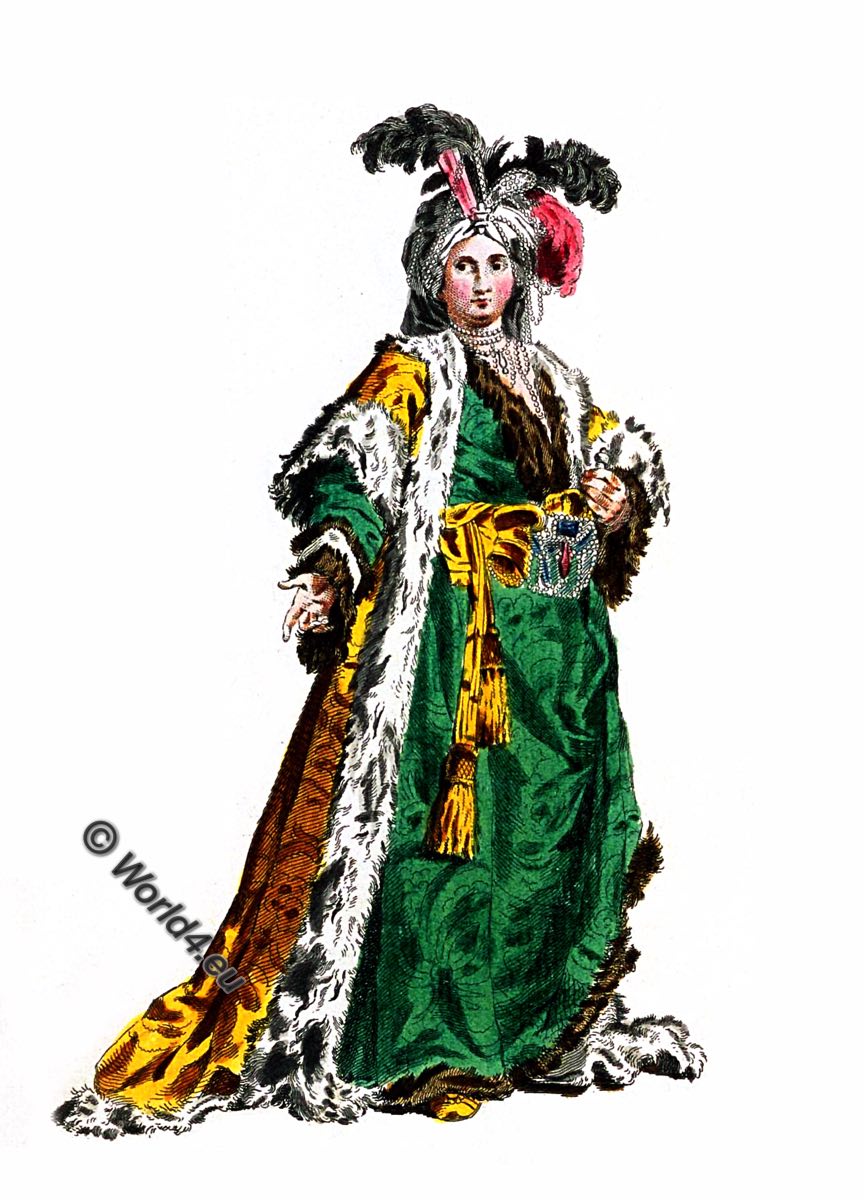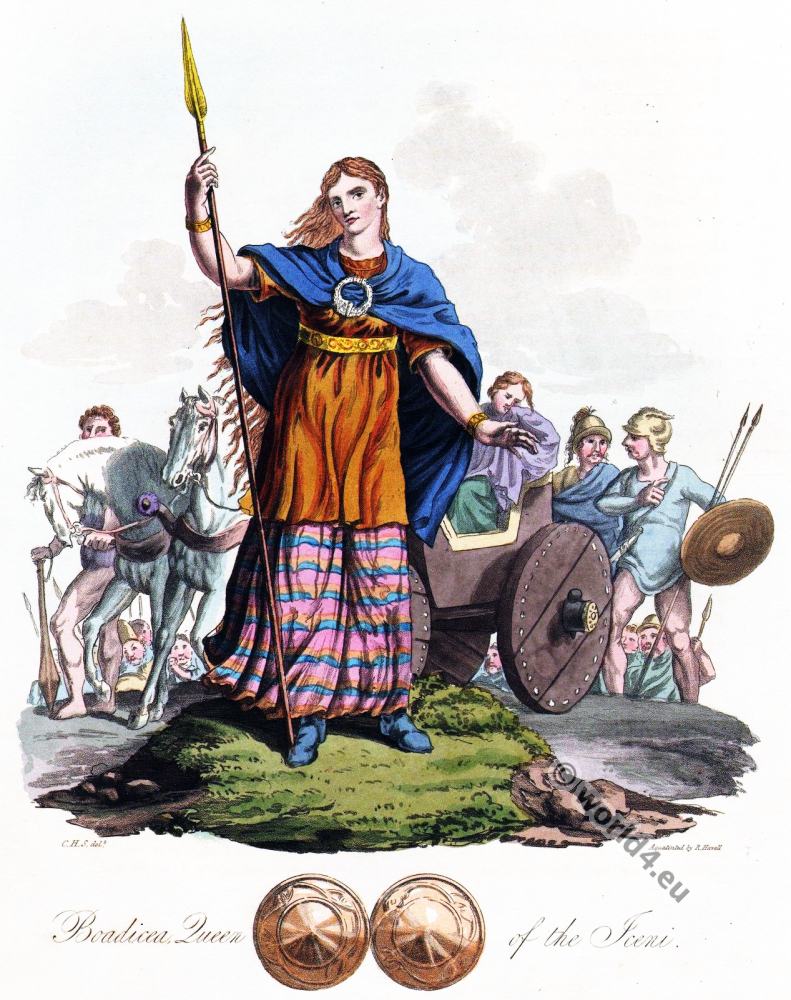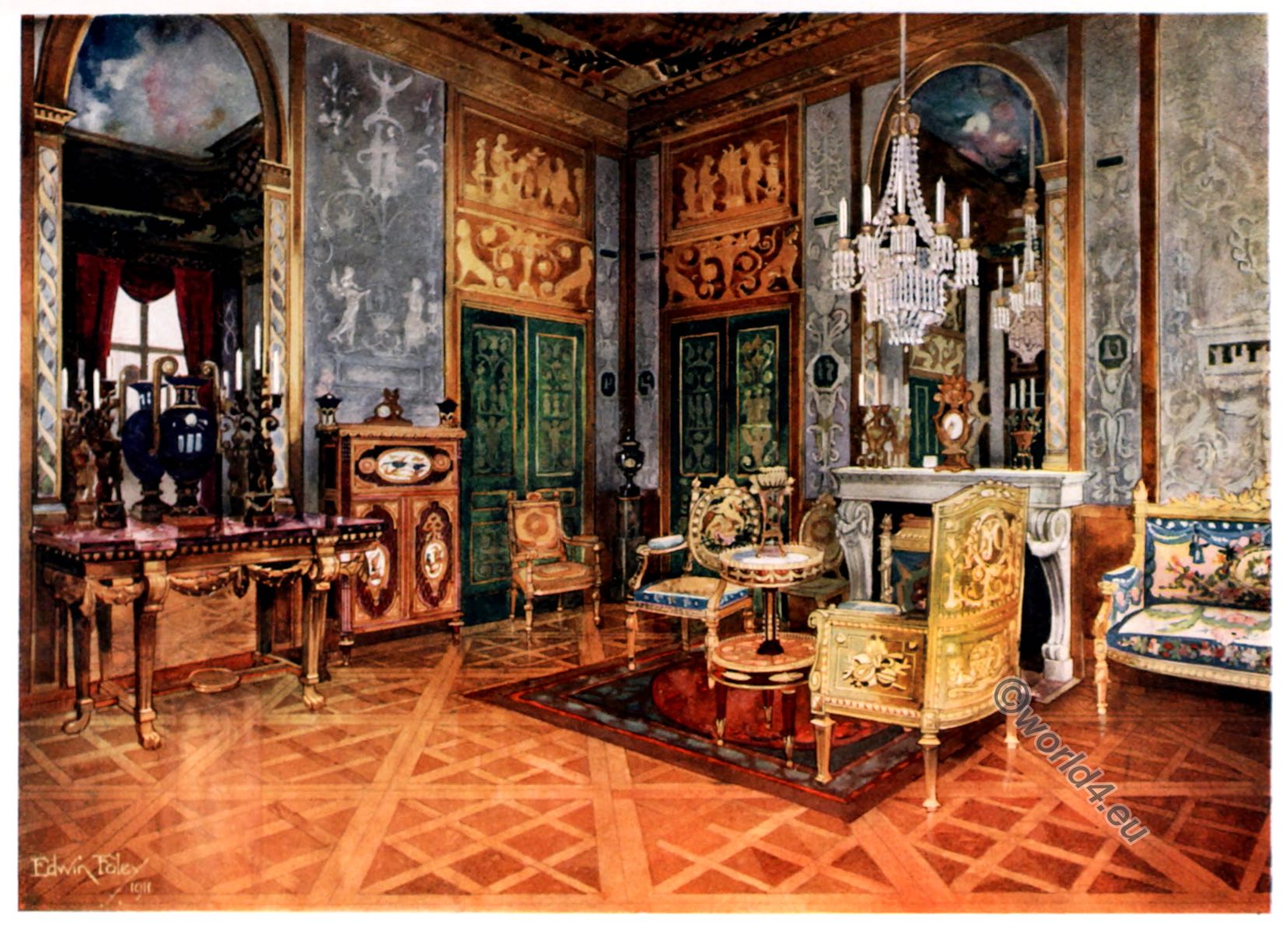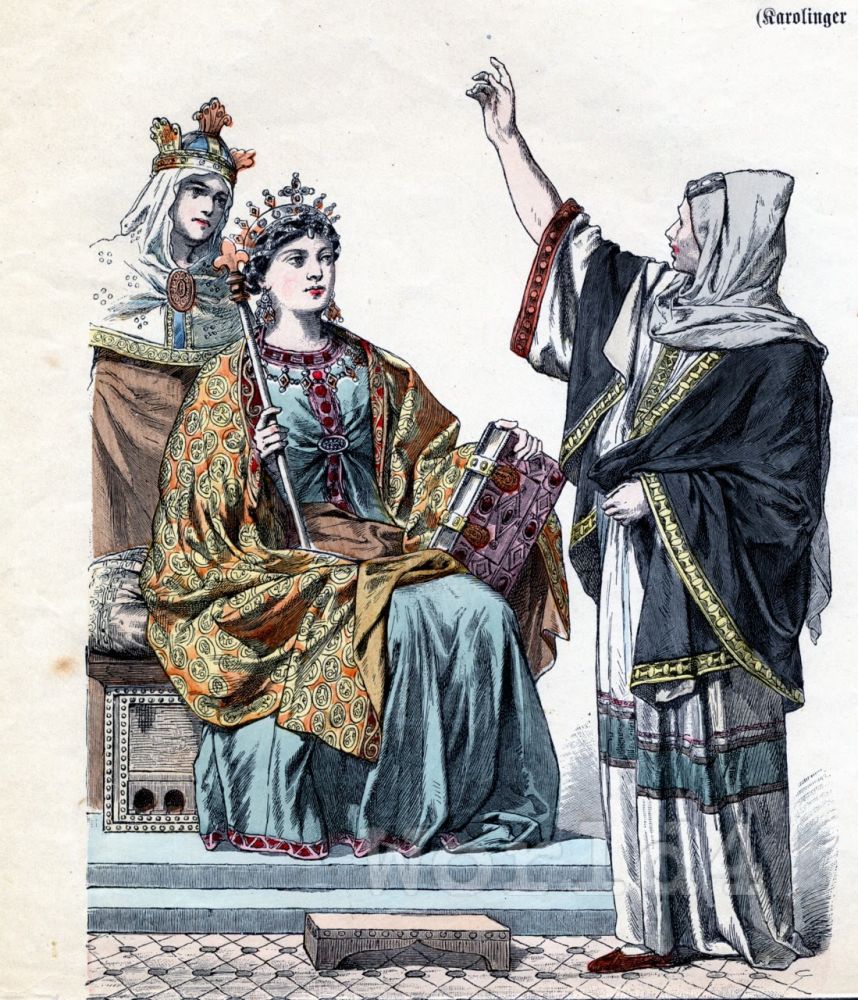Elizabeth I.
Elizabeth I 1533-1603, actually Elizabeth Tudor, also known as The Virgin Queen was from 1558 to the day she died queen of England. Elizabeth was the daughter of Henry VIII. The fifth and last member of the Tudor dynasty to the English throne. Her mother was Anne Boleyn.

The reign of Elizabeth I. The days of Queen Bess.
The change which was effected both in the government of the country and the condition and loyalty of the people under the reign of Elizabeth, must to some extent be attributed to the character of the queen herself, and to that keen perception of the talents and qualities of counsellors, which was a distinguishing characteristic of Henry VIII. She appears, indeed, to have inherited much of her father’s strength of will and determination, while her policy exhibits the caution of her grandfather.
Perhaps it is because she also displayed a great liking for admiration, and for the refined and respectful flattery with which timid lovers address their mistresses, that it is difficult to define her true character. Her willfulness occasionally took the form of womanly waywardness, just as her literary ability on more than one occasion was directed to the composition of a love sonnet.
There can be no doubt that she was pleased with the company of statesmen who were also courtiers enough to devote attention to this feminine disposition, and thence arose an artificial or romantic style about the court, and in the addresses of her favorites, which her enemies and calumniators afterwards turned to scandalous account, by base insinuations against her moral character.
These slanders were supposed to receive some support from the repeated dissimulations by which she encouraged and yet frustrated the expectations of her marriage; dissimulations which had their reason both in a kind of irresolution which made her slow to commit herself to any policy depending on a foreign coalition, and a personal repugnance to any course of action which would interfere with her own royal prerogative. Whether there was really any sentiment of affection for the unscrupulous and brilliant Leicester, or still later, with the accomplished Essex, it is difficult to declare, especially as her enemies grossly exaggerated every evidence which might have been regarded as a proof of womanly attachment, for the purpose of accusing her of a license of which she was herself too ready to suspect and to accuse other women.
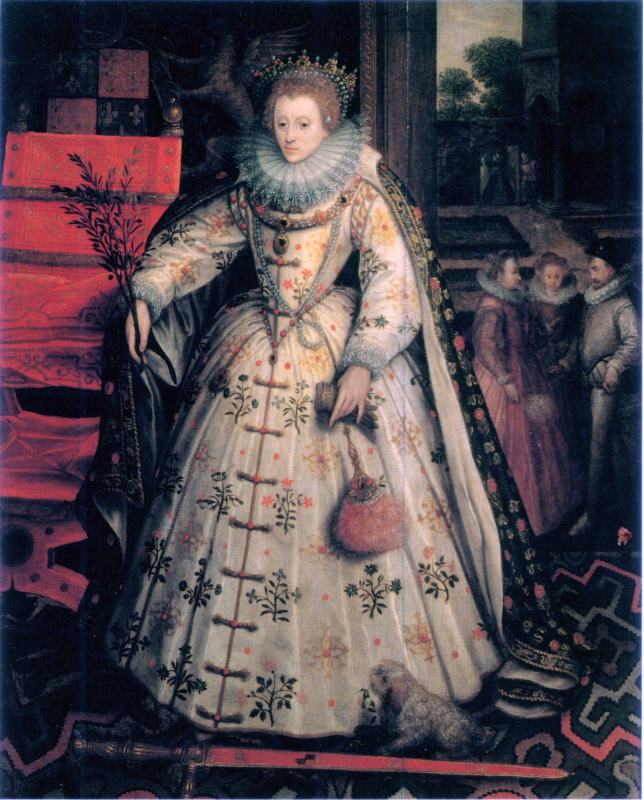
The conduct of Elizabeth to the unfortunate Mary, Queen of Scots, is the greatest stain upon a period which, taken altogether, may be justly regarded as one of the most brilliant in English history; but Mary unhappily was in such a position that she aroused the antagonism of the English queen in the very directions where jealousy and an imperious and unforgiving temper were most likely to lead to actual vindictiveness. Mary was possessed of far greater personal attractions than Elizabeth; her beauty was famous in Europe; she had been married, and was in fact still a competitor in matrimonial alliance.
She was a Roman Catholic, and though there may have been some doubts as to the original inclination of Elizabeth to Protestantism, her policy was soon determined on the side of the Reformation. Above all she was next in succession to the English throne, and yet was an independent sovereign, a position which the dominant and jealous temper of Elizabeth could not tolerate.
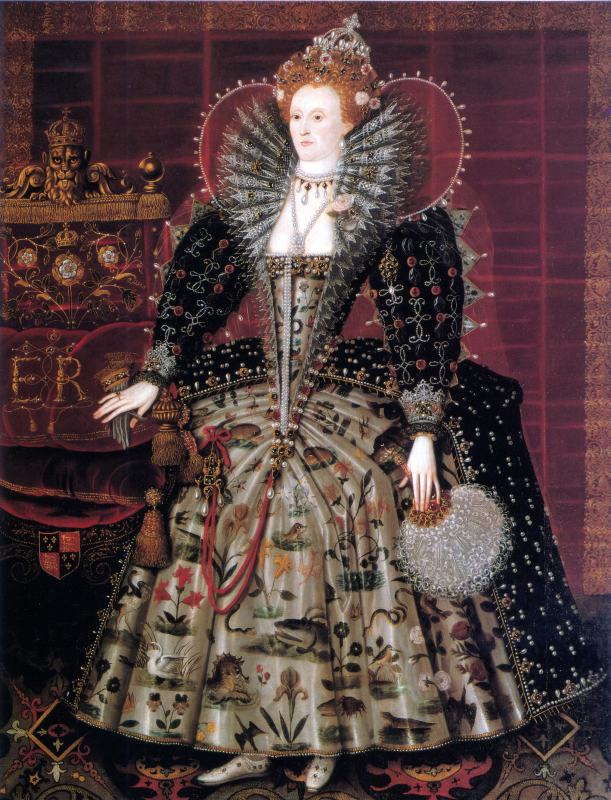
It is not difficult to understand how “the Virgin Queen” should have gained the loyalty of the nation, and exercised such influence over some of the most gifted men of the time, that their praises took the form of fantastic flattery in accordance with the custom of poets and sonneteers of that age. She has been soberly described, however, as “of a modest gravity, excellent wit, royal soul, happy memory, and indefatigably given to the study of learning, inasmuch as before she was seventeen years of age she understood well the Latin, French, and Italian tongues, and had an indifferent knowledge of Greek”.
Neither did she neglect music, so far as became a princess, being able to sing sweetly, and play handsomely on the lute. With Roger Ascham, who was her tutor, she read over Melanchthon’s Commonplaces, all Tully, a great part of the histories of Titus Livius, certain select orations of Isocrates (whereof two she turned into Latin), Sophocles’ tragedies, and the New Testament in Greek, by which means she framed her tongue to a pure and elegant way of speaking, and informed her mind with apt documents and instructions, daily applying herself to the study of good letters, not for pomp and ostentation, but in order to use in her life and the practice of virtue; insomuch as she was a kind of miracle and admiration for her learning among the princes of her times.”
This, apart from its obvious exaggerations, was not an altogether false estimate of the accomplishments of Elizabeth, who certainly made use of her attainments, not only in those discussions on theological subjects with which she had to contend during the reign of her fanatical sister, but afterwards by a prompt power of illustration which gave “force to her wit, and frequently discomfited her political opponents.
Her pure and elegant way of speaking” was not always apparent, especially when she rapped out those resonant oaths which reminded the hearers of her royal father; but there can be no doubt that she was able to hold her place amidst a court distinguished not only for learning but for cultivation of the lighter arts, and her reign was distinguished for a revival of letters.
With a certain masculine force of character,and the frequent exhibition of a temper and arrogance that can scarcely be regarded as womanly, the queen was of a right royal presence, and possessed just that kind of personal beauty which might be expected in a daughter of Henry VIII. and Anne Boleyn, an underlying feminine grace which was not altogether obscured by her dominant manner and keen authoritative expression of countenance.

Never was there a period when the refining and elevating influences were more rapidly developed. The Elizabethan age was illustrious because of the number of great and gifted men who adorned it. The court itself included men who were not only themselves accomplished in literature, poetry, and philosophy, but who were the patrons of those who were still more distinguished.
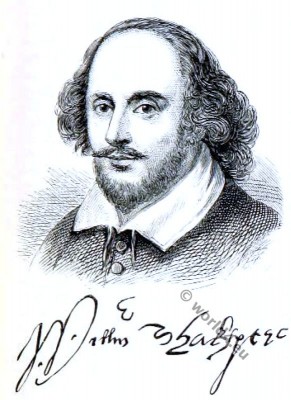
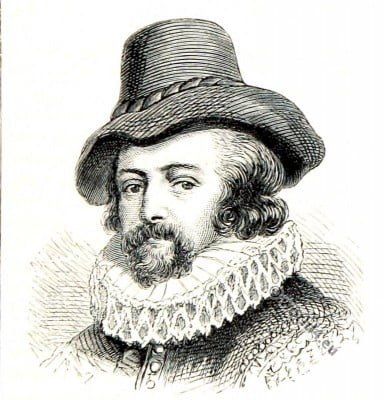
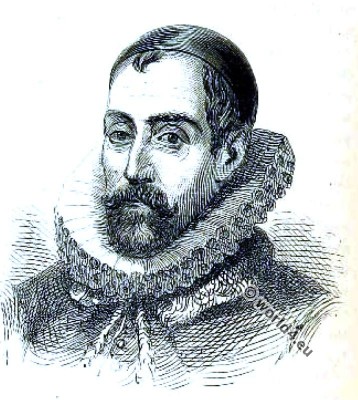
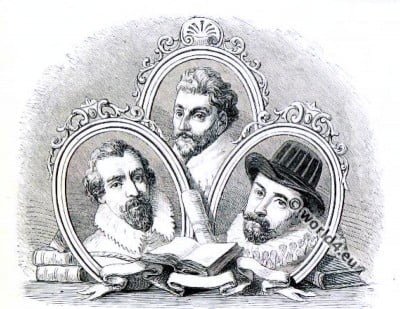
Sir John Hawkins (1532-1595) was an English navigator and pirate. One of the foremost seamen of 16th-century England, Hawkins was the chief architect of the Elizabethan navy. As one of the first English slave trader, he acquired through human trafficking between Africa and the West Indies great wealth.
Sir Francis Drake (1540 -1596) was an English privateer and explorer, later Vice-Admiral and the first English Circumnavigator. As a navigator and sailor, he is still regarded as one of the outstanding personalities of the English seafaring.
Spenser, William Shakespeare, and Jonson were the friends of the brilliant company represented by Raleigh, Bacon, and others whose names are as familiar in the world of literature as in that of statesmanship. Indeed a time of peace and of the abatement, if not the abolition of religious persecution, enabled the successors of the men who had made the reign of Henry VIII. and Edward VI. famous for the cultivation of letters, to raise dramatic and poetic art in England to a position which inaugurated a new era, and has never since been surpassed, while the attainments of ladies of aristocratic or gentle birth gave a stimulus to learning and accomplishments which has since been wanting, so that we have even in the present day to revert to that higher culture for women without which our advanced education fails to exercise a wide and lasting social influence.
The reign of Elizabeth is still regarded as a glorious period in English history, not only a period of great deeds and of a certain magnificence of display, but one in which, after long suppression, the English people rose, if not to absolute freedom of conscience, to a wide and welcome liberty of thought and action, and to that kind of independence which gives men room to live and work hopefully in the expectation of personal as well as national benefit.
The policy which, while it was successful in avoiding war, raised the spirit and the determination of the country, promoted both the prosperity and the enterprise of the community. Agriculture prospered, commerce was developed and enormously extended, and those maritime adventurers who combined trading with exploration, and both with pillage of the Spaniards, opened up to England a new world.

Even with all the corrections that must be made, now that calm and unprejudiced examination enables us to estimate the character of Elizabeth, and the true nature of the alternately bold and crafty policy which distinguished her reign, we cannot restrain our admiration for the ability and courage of the sovereign, and of a court consisting of men eminent alike for their accomplishments and their sagacity. Statecraft, bravery, wit,and learning centered round the person of the queen, and though the court was filled with intrigue, and Elizabeth herself was constantly in danger of exhibiting undue favoritism, there can be little doubt that the almost fantastic eulogies addressed to her represented a sentiment not altogether false or unnatural.
It should be remembered that the accession to the throne of a young and not unlovely princess, who added to a royal grace and dignity those accomplishments which enabled her to hold her sovereign place amidst a brilliant throng of courtiers, aroused a sentimental chivalry, which caused men like Raleigh, Cecil, Sidney, and the rest to display an emotional loyalty. It was an age of poetry, of music, and of song, as well as an age of action. There were theaters for stage-plays at Bankside and elsewhere, besides gardens for bear-baiting, and great bouts of single-stick, broadsword play, and morris dancing. Dramas were performed in the inn yards, and shows and pageants always accompanied royal visits.
Shakespeare, Beaumont and Fletcher, Ben Jonson, Spenser, and Bacon, would have made any age illustrious; and when to their grand and enduring achievements in literature and philosophy were added the daring and successful enterprise of men like Hawkins, Drake, and those navigators who were both merchantmen and privateers; and the statesmanship of Walsingham, Throckmorton, Burleigh, and the confidential advisers of the queen, we cease to wonder that the “days of Queen Bess” should so long have been regarded with pride and significant satisfaction.
The extension of commerce, together with the prosperity of the country, contributed to the increase of luxuries,and the introduction of the products of distant lands added to the enjoyments not only of the nobility but of the people.
The court of Elizabeth was characterized by a certain sumptuousness which did not degenerate into vulgar excess, and though many of the nobles of the time were extravagant in the matter of dress, they ceased to support a large number of followers. Indeed the independence of the country had contributed to the abolition of that feudal state which kept such large numbers of the common people in a condition of servitude.
The queen, who probably from the necessities of her early life had learned to be frugal and even parsimonious in her private expenditure, could exercise a fitting magnificence when occasion required; and as she never without the utmost reluctance called on her people for additions to the royal revenues, the charges for presents and expenses which were requisite on state occasions were mostly paid from her own purse.
It was an age too when costly display and rich presents were recognized as essential, as our illustrations of some of the private gifts to and from the queen will show. One of the most curious of these is the jewel which was presented to the queen by Bishop Parker, who by the interest of Anne Boleyn had been chaplain of Henry VIII., but was deprived of all his preferments by Mary, to be reinstated again and made Archbishop of Canterbury when the daughter of his patroness came to the throne.
Parker was a representative prelate; for he was earnest in advancing the Reformation, and strict in preventing the encroachment of the Puritans. It was he who superintended the translation of the Scriptures known as the Bishop’s Bible, and he was celebrated also for his acquaintance with Saxon history and early English literature. The cup given by the queen to Bullinger, the earnest, able, but moderate Swiss reformer, is also an interesting relic.
Of course the dresses both of men and women of the higher rank were costly, even though they were often ungraceful, and the variety of costume among the lower order offered a contrast even to those of the time of Henry VIII. Sumptuary laws forbidding certain articles of apparel and ornament, had to be enforced against the London apprentices, and the nobles of the court wore doublets and cloaks embroidered with silk and pearls, jeweled buttons, and ropes of pearls or gems around the neck, or even encircling the hat, which was made of silk or velvet, beaver or taffety. The variety of female costume was bewildering, especially in the matter of hoods and headdresses, while the hair was “curled, frizzled, and crisped, and laid out in wreaths and borders from one ear to the other.”
In addition to this there was a varying fashion in the color of hair, so that ladies not only dyed their locks, but wore false plaits, and even wigs. Both Mary, Queen of Scots, and Elizabeth had wigs of various colors, and wore black, fair, or red hair, as whim or fashion changed. With the enormous ruff (which had to be sent to Holland to be stiffened, as the Dutch laundresses alone understood the art of starching), the long stiff embroidered bodice, reaching in a peak almost to the knees; the clumsy and expansive “fardingale,” precursor of the hooped skirt; the big fan of feathers, the portable mirror attached to the girdle, and the black velvet mask with glass eyes, we are familiar through numerous pictures and illustrations.
Perfumed silken or linen gloves, embroidered with gold or silver, and stockings of knitted silk, were in use at the later period of the reign of Elizabeth, for whom her tire woman made the first pair of silken hose, as a New Year’s gift, stockings having been previously made of fine cloth.
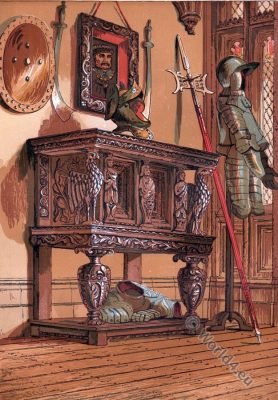
The luxurious mode of living which the nobles of the time of Henry VIII. had maintained, continued, but with greater variety and greater refinement, while the provisions of the common people were generally more plentiful, and included some luxuries.
The dealers in flesh, poultry, and grain were prevented by law from increasing prices of commodities in London by combining to raise the market, and according to Chamberlain in 1572 the poulterers’ charges were: for the best goose, 1s; the best wild mallard, 5d.; the best capon, 1s.; the second sort, 10d.; the best hen, 7d.; the best chicken, 3d; an inferior sort, 1d.; the best woodcock, 5d.; the best plover, 3d.; pigeons, per dozen, 1s.; blackbirds, per dozen, 3d.; rabbits, each, 3d.; larks, each, 6d.; the best butter, at per pound, 3d.;the best eggs, five for a penny.
In the reign of Henry VIII. the usual meals of the nobility were, breakfast, which was taken at eight o’clock, dinner at twelve; a slight meal, called “an afternoon” at three; supper at six; and an after supper near bed time, at which wine was used, the drink at the other meals being mostly ale. In the reign of Elizabeth the meals were reduced to three, of which the dinner was a kind of state repast. When the guests assembled at a nobleman’s house perfumed waters were handed round, in which they dipped their fingers; after which the company was ushered into the dining hall in order of rank, the superior guests occupying seats at the upper tables, and the inferior, together with the officers of the household, at the lower.
The tables were covered with costly cloths, the dishes were mostly of silver, and the viands were both dainty and plentiful. The boar’s head was a standing dish, and beef, mutton, venison, sucking pigs, game, and poultry, were accompanied by rich sauces, and succeeded by all kinds of cakes and confectionery. The wines were so numerous that it appeared as though the world must be ransacked to procure them; but they stood upon a sideboard, and each guest called for a flagon of that which he preferred. The men wore their plumed and jeweled hats on all occasions except when exchanging courtesies, giving or acknowledging a toast, or in the presence of some very superior person or of royalty.
Of course the ordinary fare even of the gentry was less luxurious. For a considerable portion of the year fresh beef was scarce and dear, though there was mutton, venison, pork, poultry, and plenty of fish. The drink was mostly ale, claret, and sack, which was simply sherry negus; the vegetables, boiled coleworts, and various herbs—lettuce, cress, endive, angelica, and others—for salads, made the chief vegetable diet until potatoes were introduced by Sir Francis Drake.
The common people, of course, fared much more plainly, and the ordinary drink was ale, which was always taken to sea along with beef, pork, and biscuit. Not only ale, however,but wine and other luxuries were on board the ships, where commanders like Drake — who yet “would have the gentlemen hale with the mariners”— assumed a kind of sumptuous state, in order to show semi-savage tribes, and the people of countries where costly ceremony was not unknown, how the mariners of the great Queen of England could have their food served on silver, drink their wine out of flagons of plate, and to the sound of a band of music, and yet be in accord with their free followers, and ready to take the same risk, and to share the same labour as the humblest of their crews.
Source: Pictures and Royal Portraits illustrative of English and Scottish History by Thomas Archer. London 1878.
Related
Discover more from World4 Costume Culture History
Subscribe to get the latest posts sent to your email.


